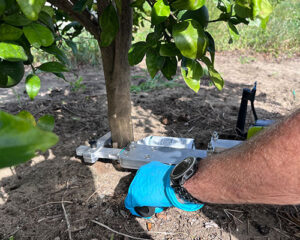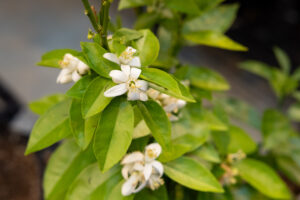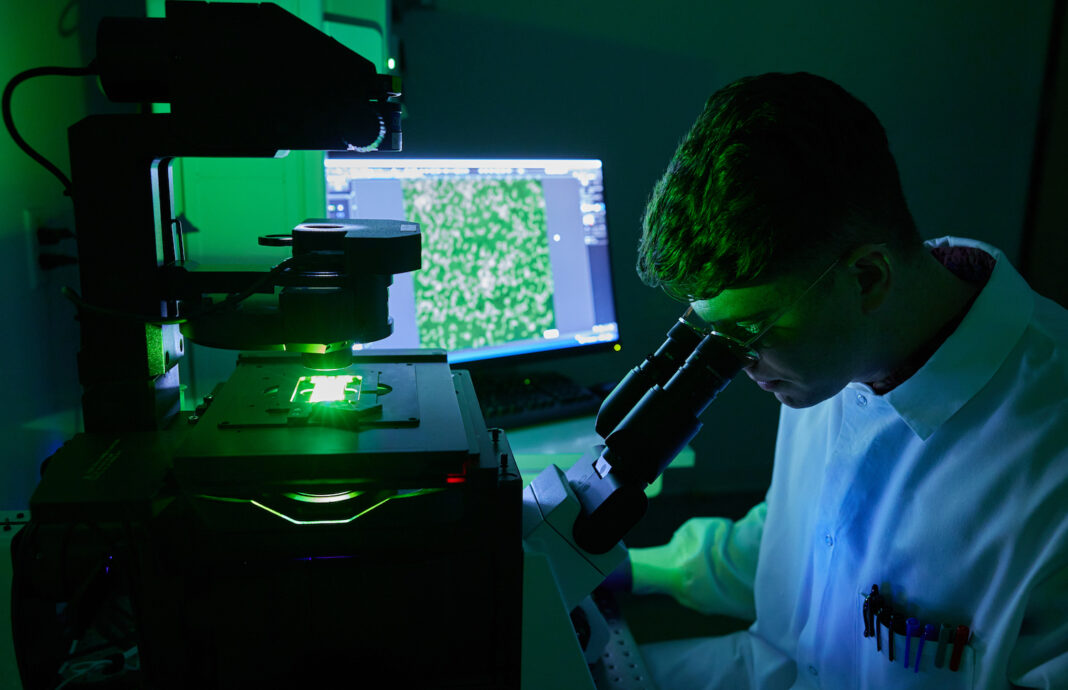By Jonathan D. Grinstein, PhD
When Gerardo Ramos, PhD, retired from his position as the Head of R&D at Syngenta and began an advisory role at Flagship Pioneering, he became very interested in one question inspired by the use of microbiomes in human health: what if the microbiome of insects could be modulated to affect their population dynamics, reducing their impact on crop yields and making agriculture more sustainable for the future?
“Our company tried to translate human therapeutic science into agriculture,” said Ramos, who is now Director and Chief Scientific Officer at Invaio Sciences. “There’s a lot of microbiome knowledge in [Flagship Pioneering] companies in the human segment, and we transported this into the insect world.”
Ramos and his colleagues explored several options, landing on what they thought was the lowest-hanging fruit: exploiting the microbiome to regulate insect populations. And just as in human health, they ran into the problem of delivery—how do you deliver biologically active compounds with target specificity?
 “Most of the problems driving the negative impact of agriculture on the environment have to do with how things are delivered,” said Ramos. “If you spray an insecticide, 95% goes everywhere, and maybe 4-5% goes where it should go. For the insect microbiome, we looked for a mode of getting the biological active compounds into the gut of the insect without spraying.”
“Most of the problems driving the negative impact of agriculture on the environment have to do with how things are delivered,” said Ramos. “If you spray an insecticide, 95% goes everywhere, and maybe 4-5% goes where it should go. For the insect microbiome, we looked for a mode of getting the biological active compounds into the gut of the insect without spraying.”
That’s what led to Invaio’s work on their microinjection technology, known as Trecise, to deliver biologically active substances to a tree’s vascular system, which would reach the insect’s gut upon feeding.
Saving Florida’s Oranges
Last month, on August 29, Invaio announced news of the first regulatory approval for commercial use of Trecise technology. Invaio’s technology will be used to deliver a biologically active compound for the suppression of citrus greening disease in Florida oranges. Citrus greening disease, also known as Huanglongbing, has wreaked havoc on the Florida citrus industry and resulted in significant yield and profit losses since 2006.
“We are deploying our mechanical precision delivery system to improve efficacy and reduce the volumes of pesticides used,” said Ramos. “To enter a market as a small company, we have chosen a problem that is unsolved, and one of the biggest agricultural problems at the moment is citrus greening. It destroyed the [citrus] industry in Florida and if we don’t control it, it will do the same in Brazil and [wherever citrus is produced].”
The culprit that spreads the disease is the Asian citrus psyllid, which introduces a slow-growing bacteria that grows in the tree’s vascular system and eventually kills the tree. Trecise injects ArborBiotic, which is Invaio’s version of a registered bactericide called oxytetracycline hydrochloride.

Ramos said that spraying oxytetracycline hydrochloride is not very efficient because it won’t get into the tree’s vascular system, where the disease spreads. But with Trecise, they can achieve excellent control of the bacteria and see an improvement in the trees’ health and the quality of the juice using less than 10% of the substance.
“That’s our first product on the market just after four years of company, which I think is a very good milestone,” said Ramos. “We have had a fantastic response from the farmers. Everybody wants the system, and we’ll be very happy to deliver it. But this is just the beginning.”
Biological Delivery Systems
The next logical step for the company’s R&D efforts was to move beyond mechanical precision delivery technology, which Ramos said is mostly suitable for big plants and trees. To do so, Ramos and his team exploited biological delivery systems from the Flagship ecosystem to create two different types of systems.
Exosomes served as inspiration for the first.
“A few years ago, it was discovered that plants also have exosomes, and when plants get attacked by external disease agents—fungal, bacterial, or insect—they produce defense peptides and proteins, which are encapsulated in exosomes,” said Ramos. “We isolated exosomes from plants and were trying to encapsulate biologically active compounds in these exosomes but we realized that this was not scalable.”
So, Ramos and his team moved to using natural oils, like soy- and sunflower-based oils, which are available on huge scales. Ramos said that with these nature-derived lipid nanoparticles, (NLPs), they can encapsulate small molecules as well as peptides and RNA, which opened up an entirely new molecular space to mine.
“There are not many peptides or proteins used in agriculture at the moment because you cannot deliver them—they’re not stable or amenable to the use of the spray,” said Ramos.
Building off the NLPs, Invaio developed another type of encapsulation, which they call microbially derived particles (MDPs). These are a bit larger than a nanoparticle. Scientists at Invaio use bacterial cells from GRAS microbes and turned them into programmable particles. Next, they modified these microbes to make them non-replicative and programmed them to produce biologically active compounds that MDPs encapsulate within the microbe for delivery.
“What we have is a system that is at both your production and delivery, and you can modify the surface of these MDPs to target them to particular plant tissues, stabilize them against the UV impact in the field, or make them more adherent to the surface where applied,” said Ramos.
This non-replicating microbe-derived delivery system works in the plant and pest microenvironments to improve crop system health. MDPs can be adapted to work with RNA, proteins, peptides, and any other programmable biological actives.
Ramos said that both the NLPs and MDPs can be targeted but use very different methods. MDPs work through molecular targeting, whereas NLPs can be targeted depending on the matrix composition to reach different plant tissues, such as the leaves or roots.

At the end of the day, what drives Ramos and the team at Invaio is the notion that the way agriculture is performed—the maintenance, harvesting, and processing of the crops—is not sustainable; it has a major impact on the environment, climate, and people’s health. Ramos believes that they will one day be able to manage agricultural systems in a way that’s better for society and the environment.
To make agriculture more sustainable in the future, Ramos says his team had to start small, which is why they chose to target a destructive disease that has no known solution. The existing strategy is to just kill the vector insect, which requires large amounts of insecticides and results in a detrimental impact on biodiversity and the environment. Ramos wants to position this solution so that the farmer can protect their existing trees as well as replant and reestablish groves in a way that the benefits grove economics, society and the environment — including improved carbon capture. This is just the very first step towards that vision.



